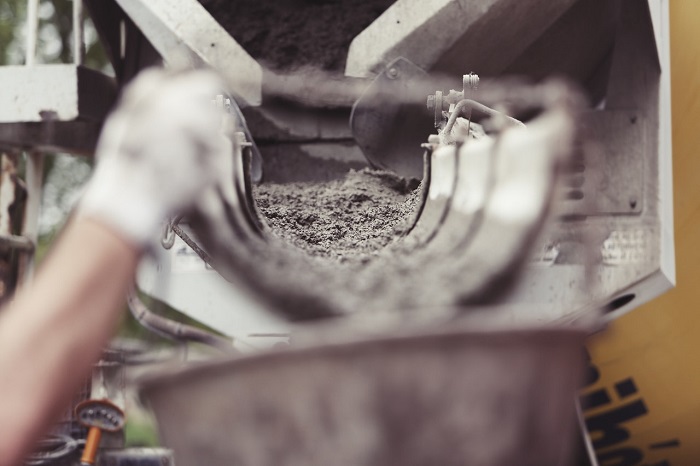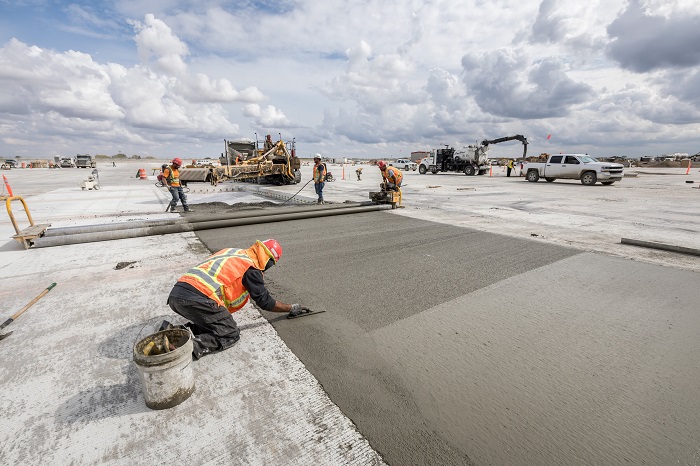ISABEL RUBIO ARROYO | Tungsteno
Concrete, the world's most widely used building material, is crucial to meeting the challenges of the Paris Agreement on climate change. Some studies indicate that for the cement sector to meet the Paris goals, its annual emissions must be reduced by at least 16% by 2030. In a context where achieving carbon neutrality has become a priority, the World Cement Association has urged industry members to ramp up efforts to "adopt new technologies quickly, and at scale, to reduce their CO2 emissions."
Reducing emissions
In recent years, a number of companies have taken action. The American company Solidia claims to have created a more sustainable cement manufacturing technology that "can be produced in traditional cement kilns using less energy and reducing greenhouse gas emissions during manufacture by 30-40%."
Concrete, which is generally a mixture of cement, sand, water and gravel or crushed stone, has a huge environmental impact. While the ecological and socio-economic impacts of the billions of tonnes of sand and gravel extracted annually to feed the global concrete industry have received some attention, there is another major drawback of this useful building material: it contributes to climate change. The processes used to produce the cement from which concrete is then created generate large amounts of carbon dioxide emissions. More than four billion tonnes of cement are produced each year, accounting for around 8% of global CO2 emissions, according to the Chatham House report Making Concrete Change.
The kilns in which cement is made are heated by the combustion of different types of fuels, thus emitting greenhouse gases. However, 60% of these emissions are not due to the use of fossil fuels, but to the chemical reactions in the process, as the European Commission points out. Cement is obtained by grinding its main component, clinker, together with gypsum and other compounds. To produce clinker, limestone, composed essentially of calcium carbonate, is calcinated at around 900°C to generate calcium oxide or lime. In doing so, a great deal of carbon dioxide is produced. The energy optimisation of this process is the way Solidia has chosen to make more environmentally friendly concrete.

The processes used to produce the cement from which concrete is then created generate significant carbon dioxide emissions. Credit: Pexels.
Capturing emissions
Other initiatives include the EU-funded LEILAC project, which aims to drastically reduce emissions from the cement industry in Europe. The research and innovation project aims to create a technology able to capture and store the carbon dioxide produced in cement manufacturing, rather than releasing it into the atmosphere. Preliminary trials at a cement factory in Belgium have shown promise, according to the European Commission. Researchers in another EU-funded project called CLEANKER have developed a new CO2 capture technology for cement plants that can, in theory, cut emissions by 90%.
Investing in such initiatives is important given that concrete is a ubiquitous, critical and indispensable material, and especially in a context in which the world's population is expected to increase dramatically by two billion people over the next 30 years. This growth may spur a dramatic surge in demand for all types of infrastructure in the coming decades. Concrete is not only used to support the structure of buildings, it is also the key material in bridges, ports and dams around the world. And it is even visible in emblematic buildings such as the Saint-Jean de Montmartre Church, in France, or the Stock Exchange Tower, in Canada.

Concrete, the world's most widely used building material, has been used for decades to construct all kinds of infrastructure. Credit: Unsplash.
Going further: concrete that stores C02
While some companies are looking to make the process of producing concrete more sustainable, others are going one step further and trying to make the material itself store carbon dioxide. Canadian start-up CarbonCure Technologies has found a way to use less cement when making concrete. In order to reduce its carbon footprint, the company introduces recycled CO2 into fresh concrete. In doing so, the carbon dioxide reacts with the calcium ions in the cement to form a nano-scale mineral: calcium carbonate. In this way, according to the company, the concrete retains its strength.
"Because the carbon dioxide actually helps to make the concrete stronger, concrete producers can still make concrete as strong as they need to, but use less cement in the process," Christie Gamble, the director of sustainability at CarbonCure, told CNN. This concrete not only stores excess CO2 from the atmosphere, but by requiring less cement, it also reduces emissions in its manufacture. According to its creators, this is a win-win: it is much more environmentally friendly "and does not compromise on performance."

CarbonCure introduces captured carbon dioxide into fresh concrete to make it stronger. Credit: CarbonCure.
Can these new concretes help to reduce emissions?
The reality is that, for the moment, most of these new generation concretes cannot compete on cost and performance with conventional concrete, according to the website Carbon Brief, which specialises in the science and policy of climate change: "None have achieved large-scale commercial use and are currently used only in niche applications." Among the reasons why these alternatives have not achieved widespread use is that their effectiveness is less proven than that of conventional cement, which has been in use for decades and decades.
In addition, green concretes suffer from carbonation faster than traditional concretes, according to the European Commission. Carbonation is a natural chemical process that occurs in concrete and can reduce its durability and strength. "When using green concrete, you reduce the carbon dioxide emissions, but the rate of carbonation is higher and corrosion can start earlier," says Dimitri Val, Professor of Infrastructure, Safety and Reliability at Heriot-Watt University. Therefore, "money would have to be spent on repairs, which increase costs and generate more emissions."
Still, the goals of the Global Cement and Concrete Association (GCCA) are ambitious: "Our climate ambition is the commitment of our member companies to drive down the CO₂ footprint of their operations and products, and aspire to deliver society with carbon-neutral concrete by 2050." While we wait for these solutions to become viable and for the construction sector to adopt them, we know that by 2050 there will be some 9.7 billion people on the planet, 68% of whom will live in cities. Carbon-neutral concrete, more than a wish, is an urgent necessity.
· — —
Tungsteno is a journalism laboratory to scan the essence of innovation. Devised by Materia Publicaciones Científicas for Sacyr’s blog.
